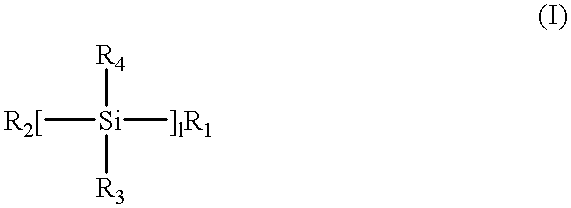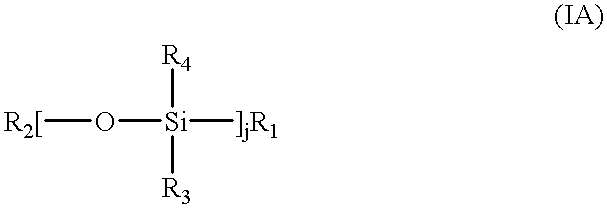Abrasion resistant dental composition product and process
a technology of dental composition and abrasion resistance, which is applied in the field of abrasion resistance dental composition products, can solve the problems of excessive wear upon contact with hard tissue, enamel and dentin, and the cost of most noble metals, and achieve the effects of reducing friction, reducing abrasive wear, and improving abrasive resistan
- Summary
- Abstract
- Description
- Claims
- Application Information
AI Technical Summary
Benefits of technology
Problems solved by technology
Method used
Image
Examples
example 2
Prior Art Tooth
A precursor blend is prepared having the following composition.
All ingredients of the precursor blend composition except polymer are added to a planetary mixer and stirring until a homogeneous solution is produced. The polymer is then added andstirred to form a uniform dough. Prosthetic teeth are molded from the precursor blend composition in heated metal molds after the precursor blend composition is aged at ambient temperature for seven days. The teeth are clear and comply with ADA / ANSI Specification 15.
example 3
Prior Art Interpenetrating Network Tooth C
A precursor blend is prepared having the following composition:
The crosslinked polymer is in the form of particles, 46% by weight of which were below 74 microns in size, the balance being below about 500 microns in size. The poly-(methyl methacrylate) have an average molecular weight of 800,000 g / mole.
The benzoyl peroxide and 2,2-bis(4-methacryloxy-phenyl)propane are dissolved in the methyl methacrylate at ambient temperature to form a monomer solution. The polymers and pigment are charged to a planetary dough mixer containing the monomer solution and the charge is stirred until visibly homogeneous. Prosthetic teeth (C) are molded from the resultant precursor blend mixture after it is aged at ambient temperature for seven days. The resulting teeth grind with a dusty, fine debris, bond to denture base and are impact and wear resistant.
example 4
Abrasion Resistant Silane Monomer Containing IPN Tooth D
A precursor blend is prepared having the following composition:
The crosslinked polymer is in the form of particles, 46% by weight of which were below 74 microns in size, the balance being below about 500 microns in size. The poly-(methyl methacrylate) have an average molecular weight of 800,000 g / mole.
The benzoyl peroxide and divinyl dimethyl silane, and 2,2-bis(4-methacryloxy-phenyl)propane are dissolved in the methyl methacrylate at ambient temperature to form a monomer solution. The polymers and pigment are charged to a planetary dough mixer containing the monomer solution and the charge is stirred until visibly homogeneous. Prosthetic teeth (D) are molded from the resultant precursor blend mixture after it is aged at ambient temperature for seven days. The resulting teeth grind with a dusty, fine debris, bond to denture base and are impact and wear resistant.
The teeth (C) formed in Example 3 showed a volume loss of 0.0316 m...
PUM
| Property | Measurement | Unit |
|---|---|---|
| diameters | aaaaa | aaaaa |
| temperature | aaaaa | aaaaa |
| particle sizes | aaaaa | aaaaa |
Abstract
Description
Claims
Application Information
 Login to View More
Login to View More - R&D
- Intellectual Property
- Life Sciences
- Materials
- Tech Scout
- Unparalleled Data Quality
- Higher Quality Content
- 60% Fewer Hallucinations
Browse by: Latest US Patents, China's latest patents, Technical Efficacy Thesaurus, Application Domain, Technology Topic, Popular Technical Reports.
© 2025 PatSnap. All rights reserved.Legal|Privacy policy|Modern Slavery Act Transparency Statement|Sitemap|About US| Contact US: help@patsnap.com



